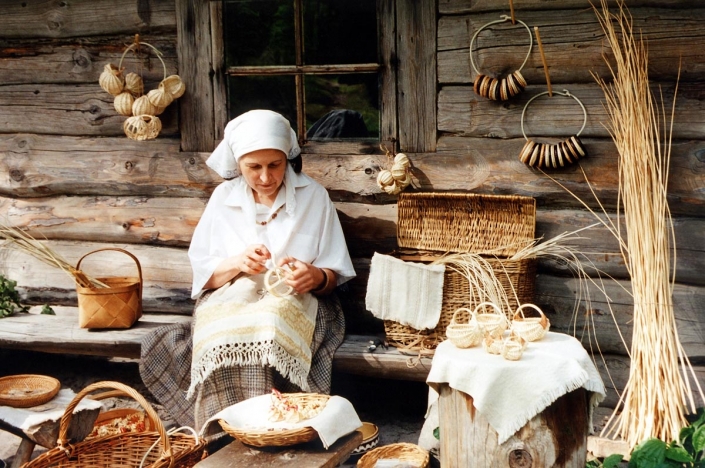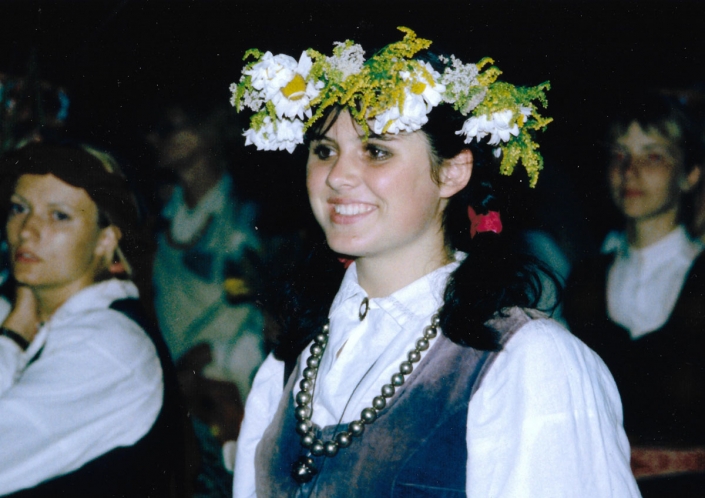A Latvian Rhapsody of Song and Dance
Travellers who go out in search of different cultures and folk customs and traditions are occasionally afforded a truly awe-inspiring experience.
Every five years in Latvia, those privileged to get the opportunity to attend, encounter one when the country’s open air festival of massed choirs and dancers is staged in Riga.
The sweep of history is in every tune and song. The event which takes place after sundown in the vast outdoor Mezaparks auditorium, surrounded by ancient pine forest is breathtakingly beautiful on a whole range of different levels.
As a seasoned traveller and hopeless music buff, I have never experienced anything like it and it is difficult to imagine anything in the world that is capable of delivering a more powerfully emotional jolt.
Though torn apart century after century by wars, famine, the totalitarian boot and ethnic cleansing of traditions, the race memory survived intact to flower once again in these new times of national freedom.
Each extraordinary coming-together is saturated with a passion unfathomable to those of us who have never suffered during the time they look back upon as the Forty Years Of Darkness – the Russification of all that they held dear.
Under the iron fist of Soviet rule in Latvia, Estonia and Lithuania, these small nations each had their languages and customs brutally eradicated.
Every fifth summer, in the month of July, they come together to share their common heritage in an epic celebration of song and dance.
Even as an outsider, if you immerse yourself, the build up to the big event alone leaves you feeling as if you have bathed in a stream of joyousness, hope, optimism and self belief in a nation reborn.
Stand in the centre of Riga, and it feels just good to be part of the intoxicating mood.
It is contagious. You may not be Latvian-born but you will want to be accepted as a kindred spirit.
Parading proudly
People watching is endlessly fascinating, onlookers swept up by the kaleidoscope of colour as excited choirs and dance troupes stream past in their thousands, parading proudly in their distinctive regional costumes.
Women with shining country goodness Meissen-like complexions (and invariably, a smile) weave delicate floral bands, interlaced with greenery, around their heads and wear them as proudly as if they were gem-encrusted gold crowns.
They carry posies or sheaves of freshly picked oak twigs and lime branches as they elegantly join the procession to the giant open-air bowl that will host the big climax.
These, and other traditions deeply rooted in pagan times, are centre stage at an event which tradition demands, does not commence until the sun has set.
Watching them is like stepping back in time; sensing that mass emotional charge of common belief and endeavour coming together in emotion-laden celebration, is powerful, moving and uplifting.
As a spectacle, the main event is unforgettable, the massed choir of twelve thousand being joined by a throng of forty eight thousand spectators who filled the arena the year that I visited.
I sat through stirring speeches/introductions and poems filled with a nation’s passion, not understanding a word but mesmerised by the stillness of that vast crowd as guest conductors and composers took the rostrum.
All around me, listening with rapt attention were weather-beaten faces of stoic life, bright and spirits soaring but with eyes tear-filled too, being stirred to their very deepest souls.
The build-up to the opening breath-taking presentation is magical.
Suddenly the entire arena is plunged into darkness and then a single spotlight illuminates a band of musicians who start to play an ancient melody; a haunting female voice joins in as a percussionist smacks the skin of a giant drum with such resounding force that it sends a chakra-rattling shock wave out into the crowd. You have begun to feel as well as see what is happening.
Choreography
Each time he struck the skin more firmly, we felt the reverberations resonating through our bodies. As the swell of the beat grew to an almost unsettling volume, then died off, the backdrop – a giant multi-tiered semi-circular arena – became floodlit as men and women who had picked their way up to the highest point from the rear of the stage, began to cascade over and descend in an amazing masterpiece or choreography.
As the choir members filtered down like a human waterfall, we heard their singing swelling louder and louder until all of the choirs are finally in place.
The musical chant they are producing in primal and passionate. You “feel” the singing too!
We remain transfixed as if we have been mysteriously transported to a different realm while soaking up these magic moments, and when the curtain finally comes down on the mother of all folk extravaganzas, we feel both dazed and exhilarated all at once.
As I eventually shuffled away from the auditorium, I thought about the power of music, the world’s one universal language. I wanted to speak, to articulate my thoughts, but couldn’t, contemplative head shaking regurgitating reflective little nuggets from the experience.
On the way home, we stood watching the crowds disperse. They too, were under the same spell and talking, if at all, in whispers. They say goosepimples are never far away in Latvia. On a very special weekend once every few years, everyone has them.







